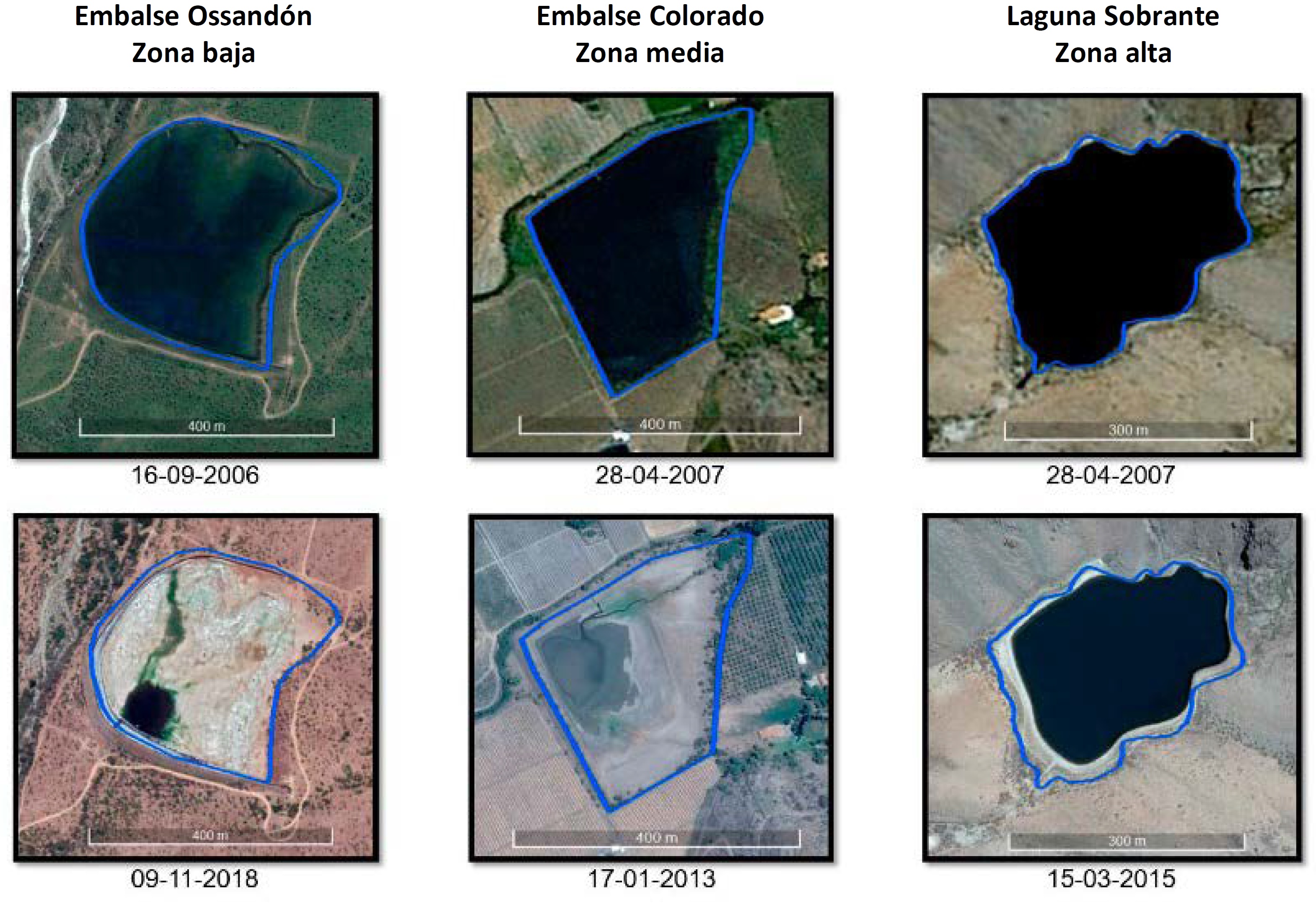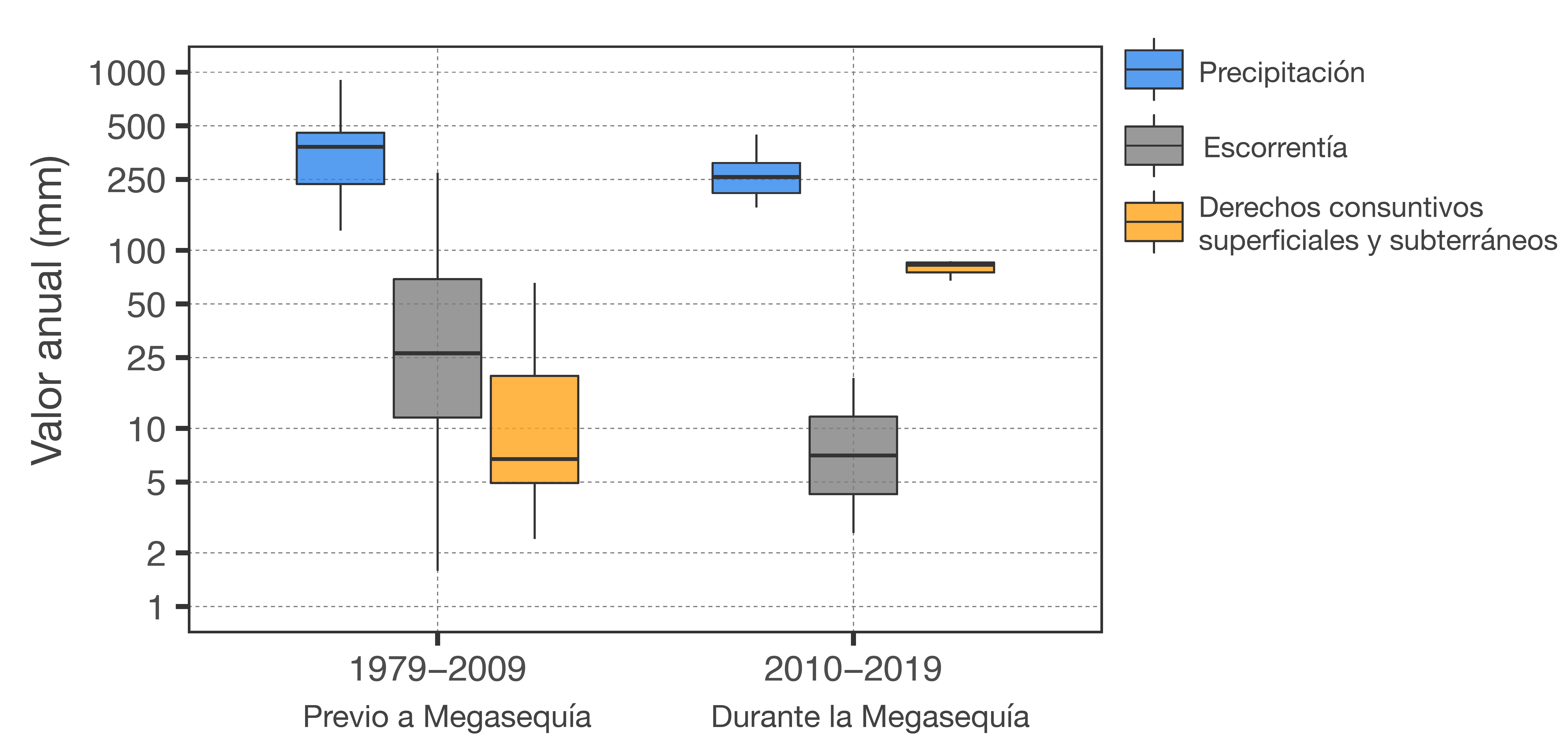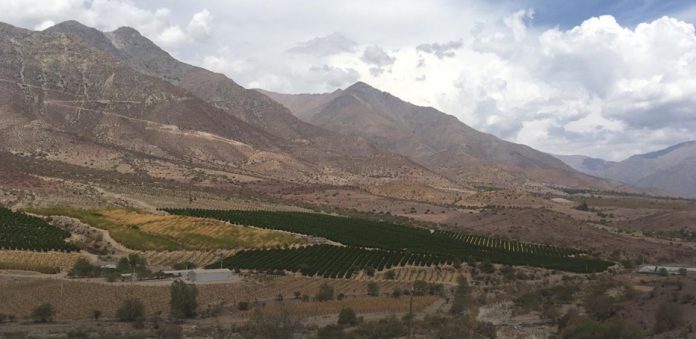The water shortage in Petorca cannot be explained solely by the megadrought that has affected central Chile over the last decade.
Water management, extraction, and poor regulatory oversight have played a major role in this crisis, transforming Petorca into an emblematic case for inequitable water access.
By Ariel Muñoz, Karin Klock-Barría, Camila Álvarez-Garretón, Isabella Aguilera, Álvaro González-Reyes, José A. Lastra, Roberto O. Chávez, Pilar Barría, Duncan Christie, Moisés Rojas-Badilla, and Carlos LeQuesne
In the municipality of Petorca, in the Valparaíso Region, more than two thousand people, or 20% of the population, rely on water delivery trucks to supply them with drinking water, due to a water shortage in the basin of the River Petorca. According to a study recently published in the journal Water, this shortage is not only due to the megadrought that has affected Chile for more than a decade; it has also been caused by water use and management practices established under the current legislation. This conclusion was arrived at using different methodologies, including tree ring analysis, satellite imagery, instrumental data, and analysis of the water rights granted for the basin.
Tree rings in the area of study made it possible to reconstruct the historic streamflow data for the Petorca River from 1300 to the present day. Based on these, it was determined that the current megadrought (2010-2020) is the most extensive and extreme dry period over the last 700 years, followed only by others occurring in the periods 1570-1579 and 1337-1346. The megadrought has been a critical factor in the Petorca basin as, unlike other basins that are fed by meltwater from Andean glaciers, Petorca relies exclusively upon winter rainfall and snowfall, which have diminished significantly in recent years.
The study also used satellite images and instrumental data to observe the variation in surface water bodies in the upper, middle, and lower basin over the past ten years, since the megadrought began. In contrast to the slight variation in water levels in the upper basin, water bodies in the middle and lower basin displayed significant reductions (Figure 1). This is related to consumptive water rights granted for the basin, which for the middle and lower stretches began in 1987, had doubled by 2000, and increased by 1200% by 2018. To date, a volume equal to around 15% of the average annual rainfall within the basin is authorized for consumptive surface water use, and a similar percentage is authorized for consumptive groundwater usage. This water extraction, when added to the rainfall deficit over the past decade, has worsened the impact of the meteorological conditions (Figure 2).
 Figure 1: The image shows the fluctuations in the levels of surface water bodies of the Petorca basin over time. The Ossandón reservoir is situated in the lower basin, the Colorado reservoir in the middle basin, and Lake Sobrante in the upper basin. As the image reveals, the reservoirs in the middle and lower basin have been more affected than the lakes in the upper basin. Source: Obtained from Muñoz et al 2020, GoogleEarth image.
Figure 1: The image shows the fluctuations in the levels of surface water bodies of the Petorca basin over time. The Ossandón reservoir is situated in the lower basin, the Colorado reservoir in the middle basin, and Lake Sobrante in the upper basin. As the image reveals, the reservoirs in the middle and lower basin have been more affected than the lakes in the upper basin. Source: Obtained from Muñoz et al 2020, GoogleEarth image.
One of the central problems in water management in Chile is the low level of monitoring and enforcement by government institutions. For example, the Petorca basin was officially declared depleted in 1997, but it was not until 2008 that the water authority (Dirección General de Aguas, DGA) began monitoring water extraction by private parties. In 2014, extraction was restricted and in July 2018, the area was declared off limits, as the levels of water extraction had surpassed the long-term sustainable supply. Despite this, between 2008 and 2018, the DGA received 241 formal complaints of illegal extraction and judicial protection orders have been issued at the request of families in the area who have been unable to access drinking water. Even when water is delivered, the trucks have been able to allocate less than 100 litres per person per day, which is lower than the amount recommended by the World Health Organization.
This complex situation has made Petorca an emblematic case in Chile for inequitable water access as a result of poor oversight and management of water in an area where most of the water is used for agriculture, leading to conflicts between water management policies, the functioning of ecological systems, and the needs of local communities. Criticism of water policy has therefore been an issue in the social crisis that has been occurring in Chile since 18 October 2019, and access to water has become a key topic in public demands for more equality in Chile. Today, Chile has three major opportunities to remedy this situation: (1) the proposed Framework Bill on Climate Change, which identifies water security as one of the principal challenges; (2) the reform of the Water Code, which defines the mechanisms through which water rights are allocated, including the water volumes granted, the ecological flows that must be maintained in the waterway, and other concerns; and (3) if a new constitution is drawn up, it could resolve the contradictions between the current constitution, which gives ownership of water rights to the rights holder, and the Water Code, which stipulates that water is a “national good for public use.” Lastly, in addition to the reiterated demands of local communities to provide access to and fair sharing of water resources, the OECD and UNDP have reaffirmed the importance of improving governance on environmental matters in Chile, for example, by creating an authority exclusively responsible for managing all water usage.
 Figure 2: Annual precipitation, annual runoff (standardized flow by area of the basin) and consumptive water rights granted (surface and groundwater, expressed in the same units of mm per year) in the Petorca basin at Hierro Viejo, in the middle reaches of the entire basin of the River Petorca. The box chart shows the annual variation in each variable for the pre-megadrought (1979-2009) and megadrought (2010-2019) periods. To help visualize the variations, the Y axis is presented on a logarithmic scale. During the megadrought, a drastic drop in precipitation and runoff can be seen, in contrast to the significant increase in consumptive water rights granted. This figure is a simplified version of Figure 5 from the article published in the journal Water.
Figure 2: Annual precipitation, annual runoff (standardized flow by area of the basin) and consumptive water rights granted (surface and groundwater, expressed in the same units of mm per year) in the Petorca basin at Hierro Viejo, in the middle reaches of the entire basin of the River Petorca. The box chart shows the annual variation in each variable for the pre-megadrought (1979-2009) and megadrought (2010-2019) periods. To help visualize the variations, the Y axis is presented on a logarithmic scale. During the megadrought, a drastic drop in precipitation and runoff can be seen, in contrast to the significant increase in consumptive water rights granted. This figure is a simplified version of Figure 5 from the article published in the journal Water.
References
Muñoz, A.A.; Klock-Barría, K.; Alvarez-Garretón, C.; Aguilera-Betti, I.; González-Reyes, Á.; Lastra, J.A.; Chávez, R.O.; Barría, P.; Christie, D.;Rojas-Badilla, M.; Le Quesne, C. Water Crisis in Petorca Basin, Chile: The Combined Effects of a Mega-Drought and Water Management. Water2020, 12, 648.

